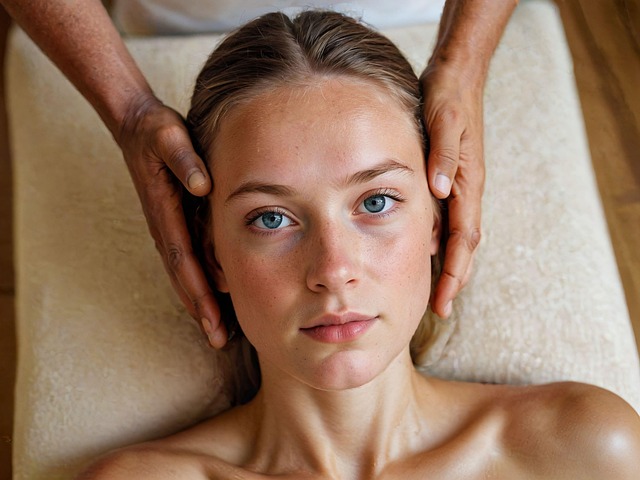Contrast therapy, using hot and cold treatments like baths or specialized equipment, is a powerful tool for athletic recovery. It speeds healing by stimulating blood flow, flushing metabolic waste, reducing inflammation, minimizing swelling, and numbing pain signals. This method enhances flexibility, accelerates tissue repair, and improves overall performance, aiding athletes' return to peak condition after workouts or injuries. The ideal contrast bath involves alternating 104°F (40°C) hot water and 59°F (15°C) cold water for 30 seconds to a minute, focusing on affected areas. Regular baths significantly improve post-workout recovery and athletic performance over time.
In the realm of elite sports performance, every edge counts. Contrast therapy, leveraging alternating heat and cold, emerges as a powerful tool for accelerating athlete recovery. This article delves into the science behind contrast therapy, exploring its profound benefits for muscle repair and injury prevention. We equip athletes with the knowledge to enhance their recovery arsenal through understanding essential equipment and creating optimal contrast baths. Discover how this simple yet effective method can revolutionize your post-workout routine.
Understanding Contrast Therapy for Athletes: Unlocking the Science Behind Recovery
Contrast therapy for athletes has emerged as a powerful tool in the realm of sports recovery. This method involves alternating between hot and cold treatments, such as soaking in contrast baths or using contrast water therapy. The science behind it is simple yet profound: extreme temperatures stimulate blood flow, which helps flush out metabolic waste and reduces inflammation. For athletes recovering from intense workouts or sports injuries, this process can significantly enhance muscle recovery.
The benefits of contrast therapy are multifaceted. It not only expedites the healing process but also improves overall athletic performance. By increasing blood circulation during hot baths, muscles receive more oxygen and nutrients, while cold temperatures constrict blood vessels, reducing swelling and pain. This alternating heat and cold treatment is a game-changer for navigating the labyrinthine recovery landscape, ensuring athletes return to their peak condition faster and safer.
The Equipment Essential for Effective Contrast Water Therapy
For athletes seeking an edge in their recovery process, professional-grade equipment designed for contrast therapy offers a powerful tool. This innovative approach involves alternating between hot and cold treatments, which has been scientifically proven to enhance muscle recovery and overall performance. The key lies in specialized equipment that facilitates this process, such as contrast baths or advanced hot and cold therapy systems.
These machines typically include customizable temperature settings, allowing athletes to alternate between heated water (around 104°F/40°C) and icy cold water (as low as 59°F/15°C). The benefits are numerous; contrast therapy increases blood flow, reducing muscle soreness and inflammation. It accelerates the body’s natural healing process, making it an ideal recovery method for athletes recovering from intense training sessions or sports injuries.
Benefits of Alternating Heat and Cold for Muscle Recovery After Sports Injury
Contrast therapy has emerged as a powerful tool in the realm of athletic recovery, offering unique benefits for muscle healing and performance enhancement. By alternating between hot and cold treatments, athletes can significantly accelerate their recovery process after a sports injury. This method involves immersing oneself in contrasting temperatures, typically a hot bath followed by a cold one, or using specialized contrast water therapy equipment.
The science behind this technique lies in its ability to stimulate blood flow and promote the body’s natural healing mechanisms. Hot temperatures cause vasodilation, increasing blood circulation to the affected area, which helps reduce inflammation and muscle soreness. Conversely, cold therapy constricts blood vessels, minimizing swelling and numbing pain signals. This alternating pattern can effectively reduce muscle stiffness, enhance flexibility, and speed up the repair process for injured tissues. As a result, contrast therapy becomes an appealing recovery method for athletes looking to optimize their performance and quickly return to training after an injury.
Creating the Perfect Contrast Bath: A Step-by-Step Guide for Athletes
Creating the Perfect Contrast Bath involves a simple yet effective step-by-step process designed to maximise benefits of contrast therapy for athletes. Start by filling a tub or basin with cold water, ensuring it’s as cold as comfortably tolerable. This initial step helps constrict blood vessels, reducing inflammation and swelling in injured muscles. Next, add hot water, creating a significant temperature difference. Aim for a 10-15 degree contrast between the hot and cold waters; this can be adjusted based on individual comfort levels. The key is to alternate between soaking in the tub and exposure to extreme temperatures, typically 30 seconds to a minute each.
During immersion, athletes should focus on affected areas, allowing the contrast to stimulate blood flow and promote faster recovery from sports injuries. After completing the cycle, gently dry off and observe the benefits of enhanced circulation and reduced muscle soreness. Regular use of contrast baths can significantly aid in post-workout recovery, reducing recovery time and improving athletic performance over time. This natural method is a game-changer for athletes looking to incorporate effective yet accessible recovery methods into their routines.
Contrast therapy for athletes has emerged as a powerful tool for enhancing recovery and performance. By combining hot and cold therapy, such as contrast water therapy, professionals can harness the benefits of alternating heat and cold to promote muscle recovery after sports injuries. With the right equipment, like specialized contrast baths, athletes can unlock an effective, safe, and accessible method to support their physical well-being. Incorporating these recovery methods into routines ensures athletes return to peak condition faster, with improved resilience for future challenges.
